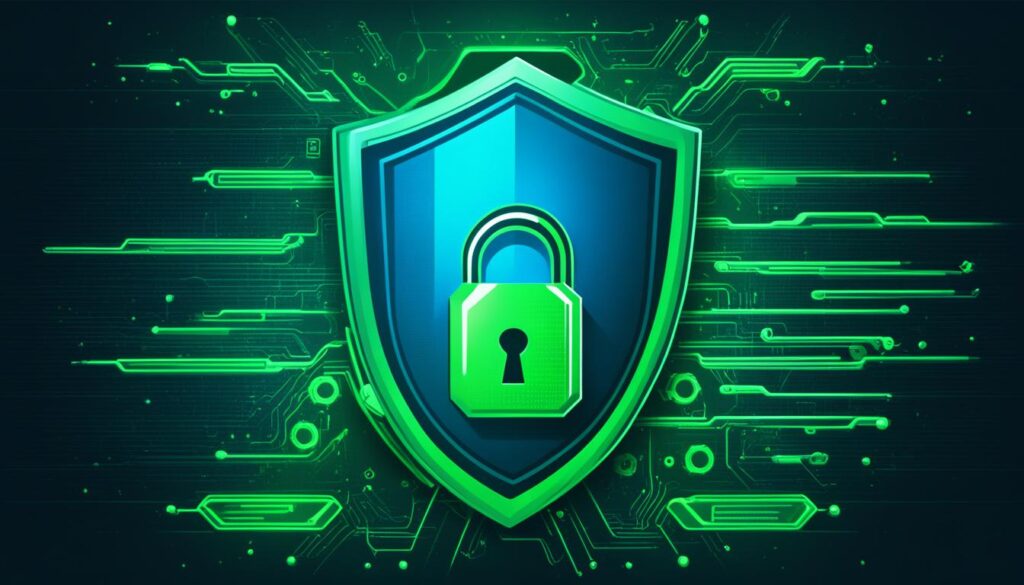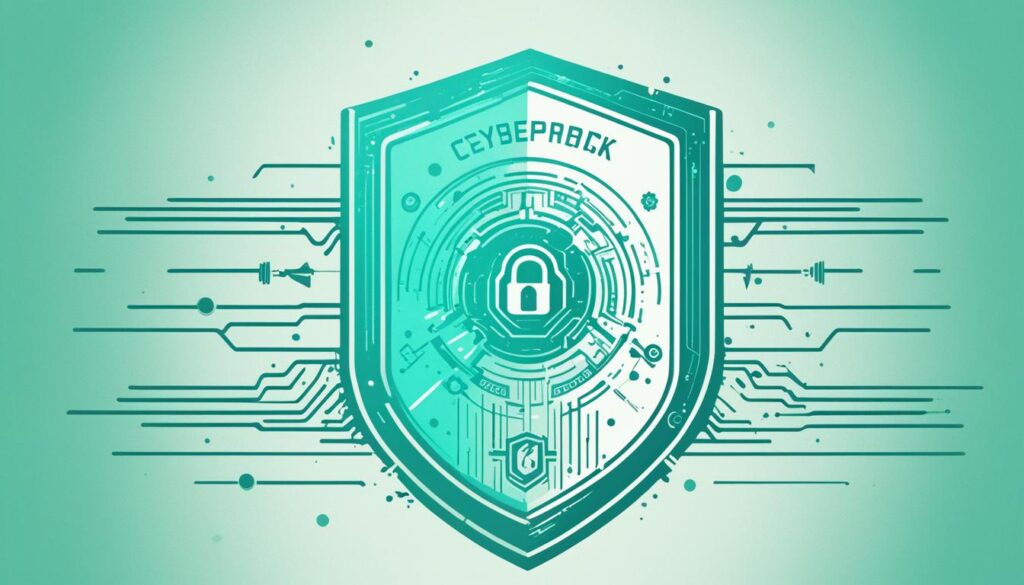In an age where nearly 70% of software installations are vulnerable to exploitation due to outdated digital signatures, the importance of signing your software with code signing certificates has never been more pronounced. Software pervades every aspect of our living—governing the devices at our homes, guiding traffic lights on busy streets, and driving business operations. Yet, a minor chink in its digital armor can lead to catastrophic results. Secure code signing is not just a best practice; it’s a critical defense strategy against a burgeoning tide of cyber threats.
Reliable and well-protected digital signatures for software play a crucial role in authenticating the origin of software applications and ensuring their integrity from the development phase to the end-user. The meticulous safeguarding of code signing keys is therefore of utmost priority, as any lapse can present a golden opportunity for nefarious actors to disseminate malware under the guise of authenticity.
Key Takeaways
- Realizing the critical nature of secure code signing as a means of protecting the integrity of software.
- Understanding that code signing certificates reinforce trust by verifying the identity of software publishers.
- Acknowledging the heightened risk associated with inadequate protection of code signing keys.
- Recognizing the dire consequences of compromised code signing certificates on user security and trust.
- Emphasizing the importance of implementing robust security measures for digital signatures for software.
- Considering the broad-spectrum impact of secure code signing on the overall security of today’s digital infrastructure.
Understanding Code Signing Certificates
As we delve deeper into the digital age, the importance of maintaining software integrity and authenticity cannot be overstated. Code signing certificates play a pivotal role in securing the digital landscape. They provide assurances of software credibility using digital signatures for software, which are indispensable in today’s vast cyberspace.

The Basics of Digital Signatures for Software
At the core of code signing security protocols lies the digital signature—a cryptographic tool that binds a software publisher’s identity with their software. Like a virtual wax seal, a digital signature enhances software authentication by validating the source and integrity of the code a user receives. Understanding how these digital signatures are created and verified is essential for anyone involved in software development and distribution. The process ensures that a piece of software has not been altered or corrupted after it was originally signed, leveraging powerful software authentication measures to do so.
The Role of Code Signing in Software Security
Security is not a single-layer construct, particularly when it comes to secure code signing. There are two primary security roles that code signing fulfills. First, it assures the integrity of the code, certifying that it has remained unchanged and free from tampering since its original signing. The second role involves confirming the identity of the publisher. When software is signed with trusted code signing certificates, users can be confident about both where the software came from and that it has not been modified maliciously.
The dual-layered approach of code signing helps to establish a trusted environment for software dissemination. By gaining familiarity with these certificates and their operation within software authentication platforms, developers and IT professionals can contribute to a safer web eco-system, buttressed by reliable security practices.
Why Secure Code Signing is Critical
The digital landscape today underscores the significant urgency behind secure code signing. As software developers aim to sustain the integrity of their products and uphold user trust, understanding the fundamentals of code signing security protocols becomes essential. In the arena of software development and distribution, the reassurance of software authenticity propels the adoption of trusted code signing certificates. But what lurks beneath the surface when these protocols are not upheld?

Risks of Not Protecting Code Signing Keys
The perils of lax security in the code signing process are manifold. Developers who overlook the importance of securing their signing keys inadvertently leave a backdoor ajar for nefarious actors. The consequences of such oversight can escalate quickly, ranging from malware proliferating under a veil of trusted software to potential legal ramifications. To demystify the gravity of these risks, let’s delve into the tangible impacts.
Impact of Code Signing Certificate Compromise
A solitary lapse in securing a code signing certificate reverberates, often translating into irrevocable damages for software developers. This not only obliterates the trust that underpins the digital certificate ecosystem but also tarnishes brand reputation—a commodity painstakingly built over years. To encapsulate the tangible repercussions, consider the table below:
| Consequence | Impact |
|---|---|
| Malware Dissemination | End-user devices are compromised, leading to data theft or system failures. |
| Brand Degradation | Loss of user trust, resulting in diminished software adoption and revenue. |
| Revocation of Certificates | Disruption in software distribution and the need to reinstate a new authentication method. |
| Compliance Violations | Penalties and legal challenges that arise from failing to adhere to industry code signing standards. |
In summary, the implementation of signing your software with code signing certificates, complemented by airtight security measures, is an indispensable component of software authentication. It ensures a protective umbrella over both developer and end-user, thereby fostering a safe and credible software ecosystem. The commitment towards trusted code signing certificates will ultimately reflect on the robustness of your software’s integrity and your brand’s resilience in withstanding the currents of an ever-evolving digital terrain.
Implementing Code Signing Best Practices
As the digital world continues to expand, the importance of secure code signing remains at the forefront for developers and organizations. To ensure the security and integrity of software, it is critical to follow code signing best practices and stay updated with the latest code signing security protocols. At the core of this process lies the need for robust protection of cryptographic keys and stringent policies around their use.
Securing Cryptographic Keys and Certificates
In the realm of code signing, the role of cryptographic keys is paramount. It is essential to safeguard these keys using top-notch security measures. To this end, a FIPS 140-2 Level 2 certified hardware security module (HSM) is the recommended standard. The HSM serves as an impenetrable fortress, limiting both physical and logical attacks which could compromise the code signing process. For organizations seeking the benefits of an HSM without the complex infrastructure requirements, a Cloud HSM service offers a convenient and equally secure alternative.

Enforcing Access Controls and Policies
To complement physical security with procedural rigor, enforcing role-based access controls and strict signing policies is indispensable. By creating a clear delineation of user roles, companies can ensure that only authorized personnel are involved in the signing your software with code signing certificates process. It’s a practice that not only curtails the risk of unauthorized access but also aids in maintaining the sanctity of trusted code signing certificates. The introduction of thorough policies for certificate signing requests acts as an additional layer of defense against the misuse or misappropriation of code.
A meticulous approach to these code signing best practices results in a robust and trustworthy code signing ecosystem, affirming the credibility of software developers and fostering confidence among end-users.
Recognizing the Value of Trusted Code Signing Certificates
The digital landscape demands stringent security measures to safeguard software from tampering and mimicry. Emphasizing secure code signing protocols and adopting code signing best practices maximizes protection. In this context, the significance of trusted code signing certificates cannot be overstated. Such certificates act as a digital seal of approval from Certificate Authorities (CAs), asserting the authenticity and integrity of software to end users.

Trusted code signing certificates play a critical role in preventing unauthorized software distributions and protecting intellectual property rights. This, in turn, nurtures consumer confidence and ensures that a developer’s reputation remains intact. Integrity, non-repudiation, and trust form the triad that underpins secure software distribution, and these elements are largely provided by these valuable certificates.
| Benefits | Outcomes |
|---|---|
| Authenticity Verification | Reduces instances of counterfeit software. |
| Integrity Assurance | Software remains unaltered after sign-off. |
| User Confidence Boost | End users are more likely to trust and use the software. |
| Legal Compliance | Meets regulatory requirements for software distribution. |
| Reduction of Security Alerts | Less intervention from antivirus and operating systems. |
Establishing a foundation of security starts with choosing a CA recognized for its rigorous vetting processes and strong reputation. By aligning with established CAs that issue trusted code signing certificates, developers signal to users their commitment to security, helping to foster a safer software ecosystem for all. Consequently, the adoption of such certificates is a crucial step in maintaining both the quality and security of software products in an increasingly connected world.
The Code Signing Process Explained
Ensuring the integrity and authenticity of software is a critical component of modern cybersecurity practices. The code signing process is the technical underpinning that instills confidence among end-users when downloading and using software. It involves a series of steps, from the initial generation of cryptographic keys to the final distribution of the software, each step reinforcing the secure code signing principles.

With the proliferation of digital threats, signing your software with code signing certificates is not just best practice—it’s a requisite for safeguarding your applications against tampering and malicious activities. By employing trusted code signing certificates, developers can assure their users that the content is protected by rigorous code signing security protocols.
From Creation to Deployment
The lifecycle of a code signing certificate starts long before it touches a string of code. Initially, secure key creation sets the foundation, typically using a hardware security module (HSM) to prevent unauthorized access. The signing authority then validates the developer’s identity and issues a certificate that will be used to sign the code. Finally, deploying the signed software signals to users that every line of code originates from a trusted source and remains unaltered since it was first signed.
Auditing and Compliance Considerations
Audit trails and compliance are paramount in maintaining the code signing best practices. It’s essential for organizations to maintain comprehensive logs of when and how their certificates are used—this accountability ensures that any potential breach or misuse can be identified rapidly. In addition, developers must adhere to policies that govern the strength, usage, and lifecycle of code signing certificates to meet industry standards and compliance requirements.
Signing Your Software with Code Signing Certificates
As the digital ecosystem continues to grow, the importance of signing your software with code signing certificates cannot be overstated. It is no longer just a best practice; it is a requisite step that ensures the security and authenticity of software. In this digital era, where cyber threats constantly evolve, software authentication plays a critical role in protecting both the developers and the end-users who rely on the integrity of the software they use daily.
The utilization of digital signatures for software is a testament to a company’s commitment to security. Such practices are a declaration that a business values the trust of its customers and goes to great lengths to guard against the tampering and pilfering of their code. Therefore, it becomes increasingly important for businesses to communicate the security measures they have taken in securing their software. This includes educating the users on recognizing and trusting digital signatures from verified sources.
- Enhanced Trust and Confidence: Certificates verify the source and integrity, solidifying user trust.
- Security against Tampering: Signatures detect unauthorized changes, protecting your reputation.
- Compliance with Platforms: Signed software often meets the requirements for distribution on formal software platforms and operating systems.
Implementing robust code signing protocols has a palpable impact on user experience by bestowing greater confidence in the safety of the download and installation process of software applications.
| Benefits | Implementation Strategies | Industry Compliance |
|---|---|---|
| Assured integrity and authenticity of software | Secure storage and management of cryptographic keys | Adherence to security standards like FIPS 140-2 |
| Improved consumer trust and product reputation | Regular auditing of signing activities | Compliance with platform-specific signing requirements |
| Protection from code tampering and malicious alterations | Training and awareness programs for stakeholders | Satisfying regulatory requirements related to digital signatures |
When developers sign their software with code signing certificates, they are making an unequivocal statement regarding the authenticity and security of their software. This process helps in forming a more secure software ecosystem, where users can conduct digital transactions and downloads without the looming threat of compromised software authenticity.
Strategies for Protecting Private Signing Keys
In the realm of secure code signing, safeguarding private signing keys is non-negotiable. With a surge in cyber threats targeting software integrity, developers and organizations must adopt comprehensive code signing best practices to shield their cryptographic credentials effectively.
Utilizing Cryptographic Hardware Products
Cryptographic hardware designed to meet or exceed FIPS 140 Level 2 standards provides a robust defense against key compromises. By integrating these specialized hardware devices, developers can assure that the code signing process is anchored by tamper-resistant storage, thereby maintaining a high assurance of key integrity.
Employing advanced cryptographic hardware such as Hardware Security Modules (HSMs) ensures private keys never leave the physical confines of the device. This presents a formidable challenge for attackers, as the keys are bound within a controlled and secure environment that significantly mitigates the risk of unauthorized extraction.
Access Minimization Techniques
To fortify security further, minimizing access to systems handling private keys is crucial. Limiting the number of personnel with access to key storage systems represents a fundamental practice for maintaining the sanctity of the signing your software with code signing certificates paradigm.
- **Restrict User Access:** Implement stringent controls to define who can interact with private signing keys. Only qualified individuals with the indispensable need for handling keys should be granted access.
- **Physical Security Measures:** Ensure that systems containing the cryptographic assets are kept in secure facilities with restricted access to prevent hardware tampering.
- **Circumscribe Network Access:** Connect cryptographic hardware to limited network points and monitor for any unauthorized access attempts, ensuring that the systems are invulnerable to network-based challenges.
The adoption of these access minimization strategies not only hardens the security posture but also solidifies the trust in trusted code signing certificates. A meticulous approach to securing private signing keys guarantees that only authenticated and untampered software bears the digital signature of credibility.
Establishing a Secure Code Signing Protocol
In the development and release cycle of software, it is essential to employ code signing best practices to maintain the security and integrity of launched applications. A sound code signing protocol is not just about using digital signatures for software, but also involves robust procedural checks to assure all stakeholders of the software’s legitimacy and security. By implementing these secure measures, developers and organizations can protect their software ecosystem from unsanctioned tampering and fortify the confidence users place in their products.
Segmentation of Test and Release Signing
One of the key strategies to achieving secure code signing is the segregation of environments used for testing and those for release. By using separate sets of keys—dedicated test-signing keys for development and unique production keys for official deployments—and distinct root certificates, teams can effectively prevent accidental or malicious leaks of pre-release software. This level of segregation safeguards against potential security issues that can compromise the release, ensuring that only authorized and finalized versions are available to the end-users.
Tracking and Auditing Signing Activities
To reinforce the code signing process, it’s crucial to implement meticulous monitoring and auditing of code signing activities. This process involves tracking who signed the software, when it was signed, and verifying the authorization for the signing. Such a mechanism is vital to the early detection of irregularities and potential security breaches. Regular audits ensure accountability and are integral to forensic analysis should a breach occur. Ultimately, these activities fortify the trust in digital signatures as markers of software safety and authenticity, essential in today’s digital landscape.
FAQ
What are code signing certificates and why are they important?
Code signing certificates are digital certificates used to sign software, applications, and scripts to verify the identity of the software publisher and ensure that the code has not been altered or compromised. They are important because they help maintain software security and user trust by authenticating the source of the code.
How do digital signatures for software work?
Digital signatures are created using a cryptographic algorithm that generates a unique signature based on the code of the software and the private key of the signer. This signature is appended to the software, and the end user can verify the signature using the public key to ensure the software’s integrity and authenticity.
What are the security protocols involved in code signing?
Secure code signing involves protocols such as using strong cryptographic algorithms, protecting private keys with hardware security modules (HSMs), timestamping code to verify its validity, and adhering to strict access controls and auditing systems to prevent unauthorized use and maintain security throughout the software’s lifecycle.
Why is protecting code signing keys crucial?
Protecting code signing keys is essential because if they are compromised, attackers could sign malicious software and distribute it as if it were from a trusted source. This can lead to widespread security breaches and a loss of trust in the software publisher.
What are the consequences of a code signing certificate compromise?
A code signing certificate compromise can result in the signing and distribution of malicious software under the guise of legitimate software, endangering user security, damaging the publisher’s reputation, and potentially leading to legal action and financial loss.
How can I secure cryptographic keys and certificates?
To secure cryptographic keys and certificates, use practices like employing hardware security modules (HSMs) that meet standards like FIPS 140-2 Level 2, implementing role-based access control, and using stringent policies for certificate signing requests.
What are the best practices for implementing access controls and policies in code signing?
Best practices include enforcing role-based access control to limit who can sign code, creating specific policies for the procurement and deployment of signing certificates, and conducting regular audits to ensure policies are followed and no unauthorized activities have taken place.
How does utilizing cryptographic hardware products protect private signing keys?
Cryptographic hardware products like HSMs protect private signing keys by securely generating and storing keys within a tamper-resistant physical device, thus reducing the risk of key compromise through secure hardware-based key management.
What access minimization techniques are recommended for code signing?
Recommended access minimization techniques for code signing include limiting the number of people and systems that have access to private keys, using secure connections, enforcing strict authentication and authorization procedures, and imposing physical security controls.
Why is it important to segment test and release signing?
Segmenting test and release signing helps maintain the integrity of the code by ensuring that production keys and test keys remain separate at all times. It protects official releases from exposure to development vulnerabilities and prevents unauthorized versions of software from being mistakenly or maliciously distributed.
How should tracking and auditing of code signing activities be handled?
Tracking and auditing should include rigorous logging of all code signing activities, real-time monitoring of key usage, verifying the identity of individuals signing code, and conducting periodic reviews to ensure the ongoing integrity and compliance of the code signing process.





